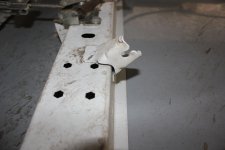CamperDoctor
Member
I’m exploring options to installing an underbody protection skin beneath a Fiat Ducato campervan. My initial idea is for it to run from just behind the exhaust system to just in front of the rear axle. It would fix up to both the longitudinal structural chassis members. Its purpose is to provide resistance to small load mechanical impacts in a similar concept to engine bay under protection.
It would have a secondary role of reducing road spray and muck from coming into contact with ancillary components such as water tanks.
My initial thoughts are to use folded/structurally formed aluminium alloy to give strength verse weight balance. Obviously the more contact fixing points I can achieve on the vehicle underbody, the more strength I can achieve.
Has anyone already attempted this?
It would have a secondary role of reducing road spray and muck from coming into contact with ancillary components such as water tanks.
My initial thoughts are to use folded/structurally formed aluminium alloy to give strength verse weight balance. Obviously the more contact fixing points I can achieve on the vehicle underbody, the more strength I can achieve.
Has anyone already attempted this?



